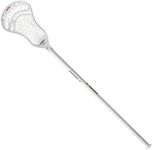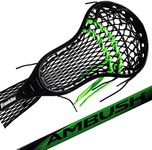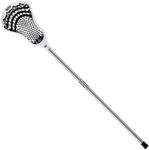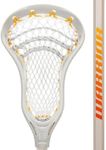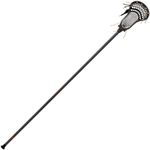Buying Guide for the Best Boys Lacrosse Stick
Choosing the right lacrosse stick for a boy can significantly impact his performance and enjoyment of the game. It's important to consider various factors such as the player's age, position, skill level, and personal preferences. By understanding the key specifications of lacrosse sticks, you can make an informed decision that will help the player develop their skills and play effectively.LengthThe length of a lacrosse stick is crucial because it affects control, reach, and maneuverability. For younger players, shorter sticks are easier to handle and control, typically ranging from 37 to 42 inches. As players grow and gain experience, they may prefer longer sticks, especially if they play defense, where sticks can be up to 72 inches. Midfielders and attackers usually use sticks around 40 to 42 inches. Choose a length that matches the player's position and comfort level.
HeadThe head of the lacrosse stick is the part that catches, carries, and throws the ball. It is important because it influences accuracy, control, and ease of use. Heads come in different shapes and sizes; wider heads are easier for beginners to catch with, while narrower heads offer more precision for advanced players. Consider the player's skill level and position when selecting a head. Attackers and midfielders often prefer heads with a tighter pinch for better ball control, while defenders might opt for wider heads to improve their ability to intercept passes.
MaterialLacrosse sticks are made from various materials, including aluminum, composite, and titanium. The material affects the stick's weight, durability, and flexibility. Aluminum sticks are lightweight and affordable, making them a good choice for beginners. Composite sticks offer a balance of weight and strength, suitable for intermediate players. Titanium sticks are the most durable and lightweight but can be more expensive, ideal for advanced players. Choose a material that matches the player's level of play and durability needs.
GripThe grip of a lacrosse stick is important for maintaining control and comfort during play. Grips can vary in texture and coating, providing different levels of tackiness and feel. Some sticks have a smooth finish, while others have a textured or rubberized grip. Beginners might prefer a stick with a more pronounced grip to help with control, while advanced players might opt for a smoother finish for quicker hand movements. Consider the player's preference for grip feel and how it affects their handling of the stick.
PocketThe pocket of a lacrosse stick is the netting that holds the ball. It affects how the ball is cradled, passed, and shot. Pockets can be shallow or deep; shallow pockets provide quicker release and are easier for beginners to use, while deeper pockets offer better ball retention and control, preferred by more experienced players. The type of pocket also varies by position, with attackers and midfielders often using pockets that allow for quick, accurate shots, and defenders using pockets that help with ball control and checking. Choose a pocket that suits the player's skill level and position.
